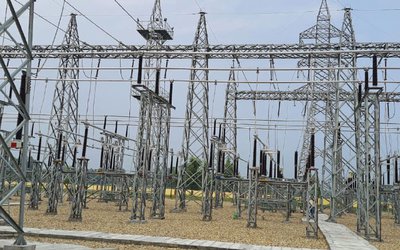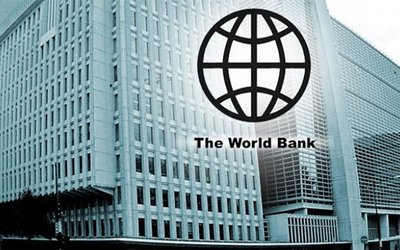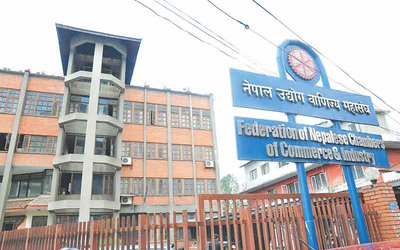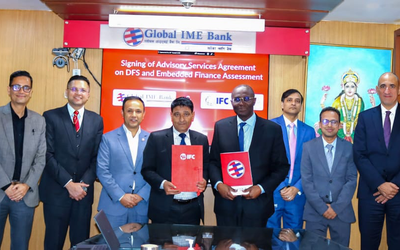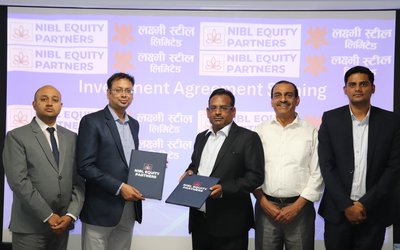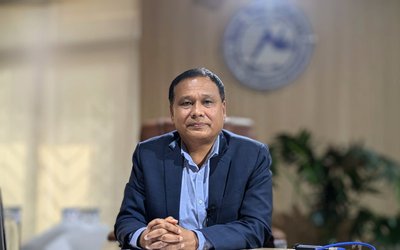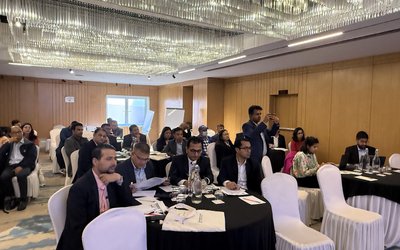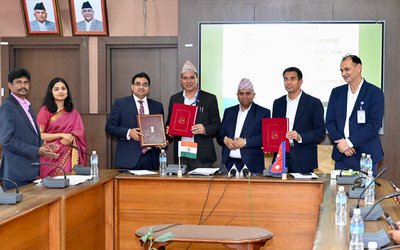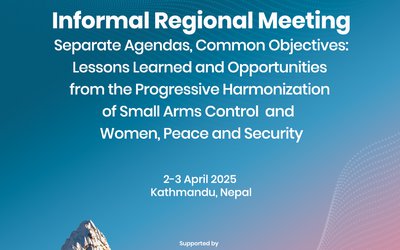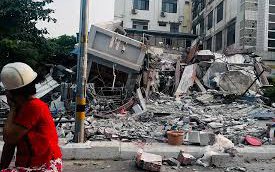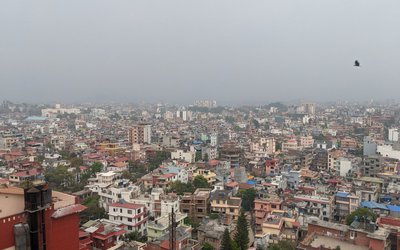
In a positive response to Nepal's demand for more power imports, Nepal and India agree to increase the capacity of the Dhalkebar-Muzaffarpur transmission line to send 1000 MW of power to India.
India has decided to promote cross-border transmission lines to carry more power during monsoon. This decision was taken during an energy secretary level meeting between Nepal and India, where India expressed interest in buying more power from Nepal. Netra Gyawali, Chief Executive Officer of the National Broadcasting Grid Company Limited, said that the Indian side was willing to receive surplus power during droughts.
The Nepalese side proposed to export more power, which was accepted by the Indian side. Although the project proposed by Nepal has not yet been approved, the Indian side has shown a positive attitude towards giving further approval. Gyawali mentioned that not all the electricity will be taken, but the Indian side is open to the proposal. The old agendas have continued.
Nepal has been allowed to export up to 600 MW in the Indian day-ahead market, and a medium-term PPA has been agreed to buy 110 MW of power for five years. For the first time, India has agreed to sell power to Haryana during the dry season under a mid-term PPA. On Thursday, Nepal and India signed a long-term power trade agreement.
On Wednesday, Nepal and India held a joint secretary-level meeting. The following day, an agreement was reached in the presence of Indian Foreign Secretary Dr. S. Jaishankar.
Energy Secretary Gopal Prasad Sigdel and his counterpart Pankaj Aggarwal signed an agreement. According to the agreement, India will import 10,000 megawatts of electricity from Nepal over the next 10 years. However, Nepal has not yet approved the export of about 800 MW of electricity.
In addition, the Chinese company refused to buy the 456 megawatts of Upper Tamakoshi power. Last monsoon, 500 megawatts of power was wasted. The Nepalese side has requested an additional permit, citing an expected increase in production and potential wastage.
Currently, there is only one 400 kV transmission line, Dhalkebar-Muzaffarpur, for exporting electricity from Nepal to India, which allows for an exchange of about 600 MW. Both sides have agreed to increase the capacity of the transmission line to allow the exchange of up to 800 MW.
The implementation of Inruwa Purnia and New Lamki (Dodhara) and Bareilly 400 KV transmission lines for import and export of electricity between Nepal and India has already been decided.

The transmission lines will be constructed under the investment modality of the new Butwal-Gorakhpur transmission line. The investment modality will be finalized early. However, the modality could not be decided in this meeting. Though the construction is to start immediately, the modality has not been finalized yet.
In addition, Nepal's electricity trade with Bangladesh was discussed and a tripartite agreement was reached. Nepal has agreed to export 50 MW of electricity to Bangladesh through the Indian transmission line. These are three positive aspects. Once the tripartite agreement is signed, exports will start. The business plan, which was supposed to start last summer, has not yet been finalized. Nepal has proposed to build a dedicated transmission line in India to trade electricity with Bangladesh, but the Indian side has not yet responded.
India is ready
"India is ready to construct the Dhalkebar-Muzaffarpur 400 kV transmission line with a capacity of 1000 MW. The Indian side is also willing to increase the capacity of this transmission line to 2000 MW, which can exchange 800 MW of electricity.
During the energy secretary-level meeting between Nepal and India, Director General of Power Development Department, Chiranjeevi Chatout, announced that they are ready to increase the power capacity by exchanging up to 800 MW," said a Nepalese official who attended the meeting.
The technical team will oversee the infrastructure required to achieve 100 MW. Currently, the capacity of the three transformers is limited to 800 megawatts due to the N minus one criterion, which also needs to be addressed. With the new transmission line, it will be possible to transmit up to 1000 megawatts of electricity.
The Dhalkebar-Muzaffarpur 400 KV transmission line has a capacity of 2,000 megawatts, but it can currently import and export only 1,000 megawatts due to the "N minus one" standard. This standard requires one line to be kept on standby in the event of an outage, resulting in a reduced capacity.
A secretary-level meeting was held in Sauraha on Friday. On behalf of Nepal, Energy Secretary Gopal Prasad Sigdel and his Indian counterpart Pankaj Aggarwal chaired the meeting. India is constructing a Dhalkebar-Sitamarhi 400kV "dedicated" transmission line to carry power only to the projects it has built.
During the meeting, the discussion focused on Nepal's use of transmission lines constructed by India to transport power to its projects. It was noted that India had given the green light in the previous meeting and this was reiterated in the current meeting. Specifically, the Dhalkebar-Sitamarhi 400 kV transmission line is being constructed by India to transport power from the 900 MW Arun III hydropower project.
The construction start date is uncertain as the modality has not yet been finalized. Two or three options have been discussed and will be finalized gradually. The investment modality was not finalized during the meeting.
India is preparing for increased power demand during the upcoming monsoon season. Nepal has received approval to export up to 600 MW into the Indian day-ahead market. In addition, a medium-term PPA was signed for the purchase of 110 MW of power for five years. India has agreed a mid-term PPA to sell power to Haryana during the dry season for the first time. Last year, India wasted approximately 500 MW of power due to non-purchase.
This year, more power is being wasted due to increased production during the monsoon. As a result, Nepal has proposed to purchase the power wasted during droughts. The Indian side has agreed to the proposal.
This press release is an unofficial translation.
The 11th meeting of Nepal-India Energy Secretary-level Joint Steering Committee (JSC) was held on January 4th, 2021, in Chitwan, Nepal. The JSC was co-chaired by Gopal Prasad Sigdel, Secretary of the Ministry of Energy, Water Resources and Irrigation of the Government of Nepal, and Pankaj Agarwal, Secretary of the Ministry of Power of the Government of India. The meeting took place in Meghauli. During the meeting, the Joint Working Group (JWG) reviewed the recommendations made on 18th Paush (3 January, 2023). The group discussed existing electricity transmission lines between Nepal and India, as well as under-construction and proposed international transmission lines. They also reviewed various hydropower projects of Indian investment and related transmission line projects, international electricity import-export, and other issues.

- The group mainly agreed on the following point: 1. After constructing the necessary infrastructure at Dhalkewar substation, a study will be conducted through JTT to increase the electricity import-export amount from 800 to 1000 megawatts using the first inland Dhalkebar-Muzaffarpur 400 kV transmission line, which is currently operated by SJVN Arun-3 Power Development Company Pvt. Ltd.
- (SAPDC). The SAPDC has commissioned a study through JTT to determine the capacity of electricity that can be exchanged from the Dhalkevar-Sitamarhi 400 kV transmission line.
- Additionally, JTT will conduct a study on possible options for exporting up to 200 MW of electricity from the Tanakpur-Mahendranagar 132 kV power transmission line or other high-capacity transmission lines.
- The Central Electricity Authority of India, in coordination with the Nepal Electricity Authority and other Indian bodies, has prepared a legal procedure for importing and exporting electricity between the two countries.
- This will be done using the transmission system of neighboring Indian states from Nepal during the rainy season through the existing transmission line of 132 kilovolts or less.
- The modalities have been approved. The JWG was instructed to finalize the investment modality to complete the construction of two more inland transmission lines between Nepal and India.
- The first line will run from Innerwa to Purnia, and the second line will run from New Lumki (Dododhara) to Bareilly. Both lines will have a capacity of 400 kV and are expected to be completed by 2027/28 and 2028/29, respectively. Nepal Electricity Authority, India's NTPC Electricity Trade Corporation, and Bangladesh's Power Development Board discussed the theoretical aspects of exporting 40 megawatts of electricity from Nepal to Bangladesh using India's transmission system. They plan to make a tripartite agreement soon.
- JTT studied additional high voltage level transmission lines needed for importing and exporting electricity between Nepal and India. Currently, Nepal exports electricity to India's Day Ahead Market, and soon it will be approved to export electricity to the Term Ahead Market and Green Day Ahead Market.
In his statement Navin Raj Singh, Joint Secretary and Spokespersion, said that the 11th meeting of the Nepal-India Energy Joint Working Group (JWG) was recently held. Navin Raj Singh, Joint Secretary of the Ministry of Energy, Water Resources and Irrigation, and D. Sai Baba, Joint Secretary of the Ministry of Power from India, co-chaired the meeting. The meeting discussed existing power transmission lines, under-construction and proposed international transmission lines, various hydropower projects of Indian investment, related transmission line projects, and international electricity import-export. After necessary discussions, the Energy Secretary-level JSC was recommended to make necessary decisions. The Nepal-India Power Trade Agreement, concluded in 2014, established a Secretary-level Committee (JSC) and a Joint Secretary-level Working Group (JWG) to facilitate, guide, and monitor the agreement's implementation.
- IME GROUP: Expands Into Paper Industry
- Mar 24, 2025
- CPN UML: Instigated By India
- Mar 23, 2025
- ADB’S CHIEF ECONOMIST: Nepal Reduces Poverty
- Mar 11, 2025
- FM DR. DEUBA: A Successful Visit
- Mar 11, 2025
- MD GHISING: Target Of Personal Grudge
- Mar 09, 2025
